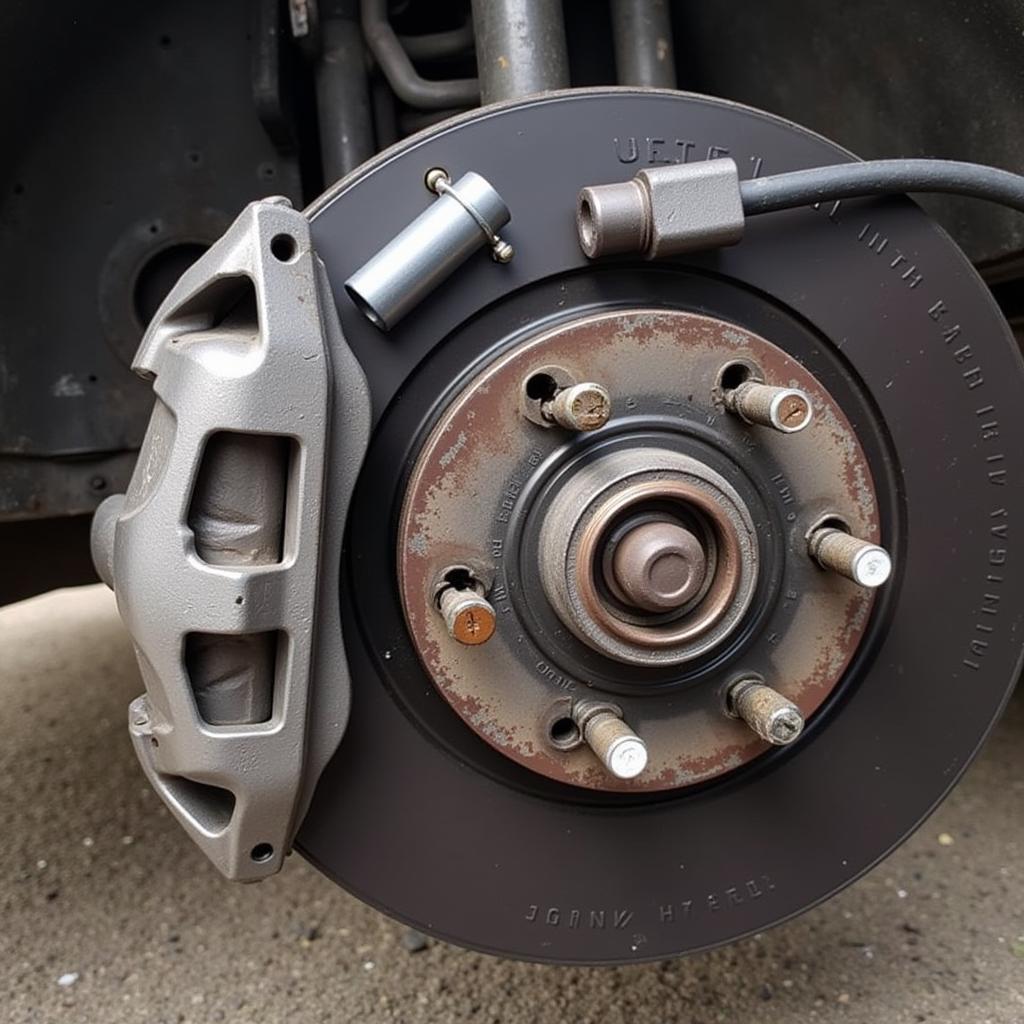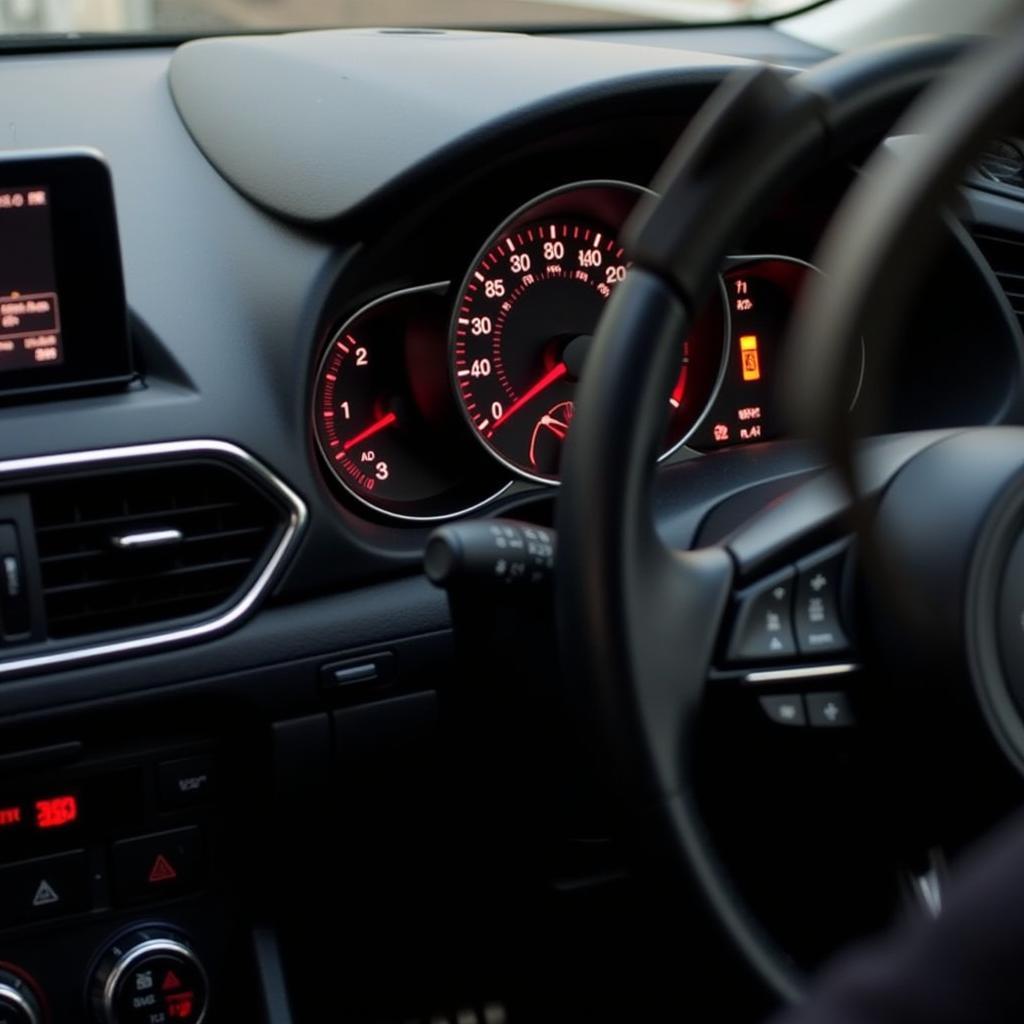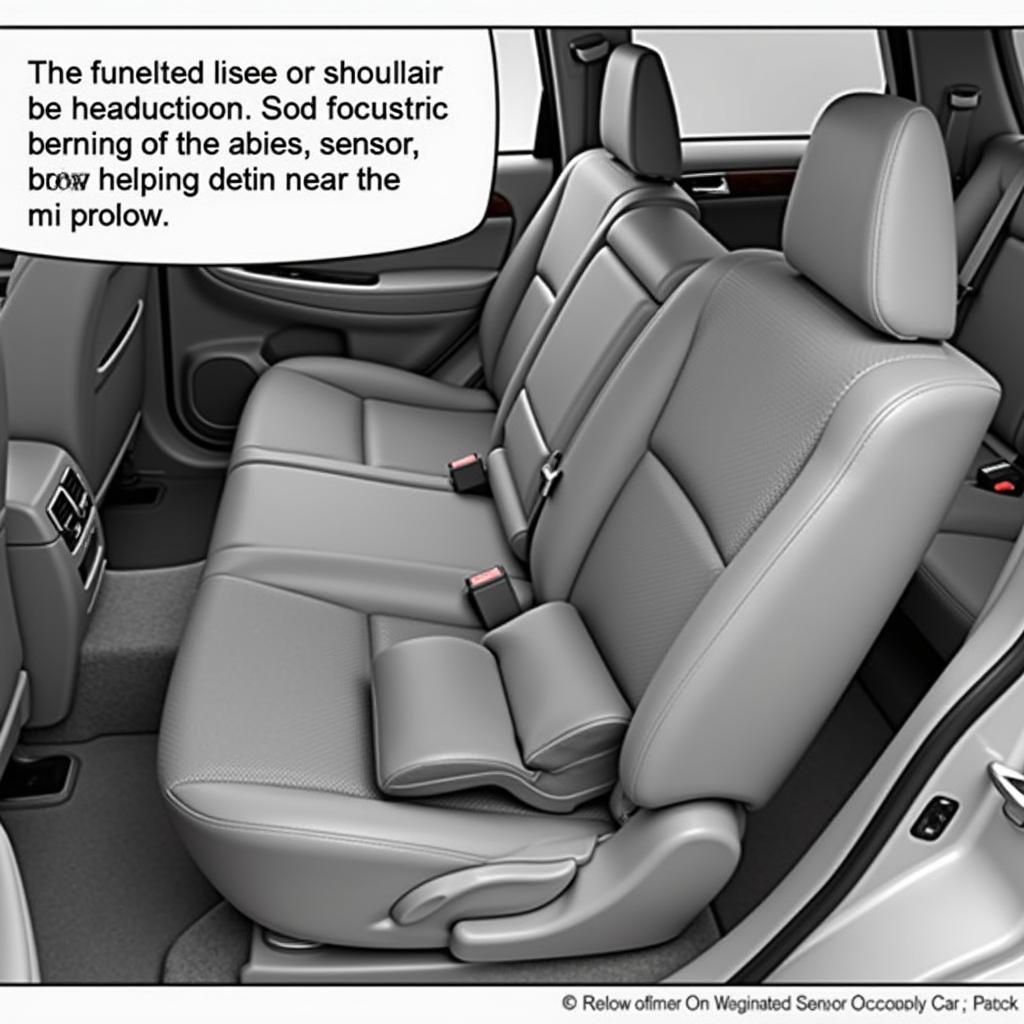The dreaded brake pad warning light illuminating your BMW’s dashboard can be a source of anxiety. Understanding how to clear brake pad warning BMW notifications, whether it involves a simple reset or a more complex repair, is crucial for maintaining your vehicle’s safety and performance. This guide will walk you through everything you need to know, from diagnosing the issue to implementing the solution.
If you’ve recently replaced your brake pads and the warning light persists, a reset is likely required. Check out this resource on how to turn off bmw brake pad warning light for a step-by-step guide.
Understanding Your BMW’s Brake Pad Warning System
BMW utilizes sophisticated electronic systems to monitor brake pad wear. These systems alert you when the pads reach a critical thickness, ensuring you have ample time to replace them before compromising braking performance. Ignoring this warning can lead to rotor damage, reduced braking efficiency, and potentially dangerous driving situations.
How the Warning System Works
The system typically relies on sensors embedded within the brake pads. As the pads wear down, these sensors trigger the warning light on your dashboard. While the warning system is generally reliable, occasional glitches or malfunctions can occur.
Common Causes of the Brake Pad Warning Light
- Worn Brake Pads: This is the most common reason for the warning light.
- Faulty Sensors: A damaged or malfunctioning sensor can trigger the light even with new brake pads.
- Wiring Issues: Damaged wiring connecting the sensors to the vehicle’s computer can also cause problems.
- Low Brake Fluid: While not directly related to the pads, low brake fluid can also trigger the warning light.
 BMW Brake Pad Sensor Close-up
BMW Brake Pad Sensor Close-up
Diagnosing the Problem
Before attempting to clear the warning, it’s essential to diagnose the root cause. Start by inspecting your brake pads visually. If they appear thin, replacement is necessary. If the pads are new or have sufficient thickness, the issue may lie with the sensors or wiring. Checking your brake fluid level is also a crucial step.
Checking Brake Pad Thickness
You can often visually assess pad thickness through the wheel spokes. Alternatively, removing the wheel provides a clearer view. Consult your BMW’s owner’s manual for the recommended minimum pad thickness.
Inspecting Brake Pad Sensors
Carefully examine the brake pad wear sensors for any signs of damage or corrosion. Check the wiring for any breaks or loose connections.
Clearing the Brake Pad Warning Light
Once you’ve identified the cause, you can proceed with clearing the warning light.
Replacing Brake Pads and Sensors
If the pads are worn, replace them along with the sensors. This usually resolves the issue and automatically resets the warning light. You might find this guide on how to reset brake warning light in bmw 2020 x1 helpful.
Resetting the Warning Light Manually
In some cases, even after replacing the pads and sensors, a manual reset may be required. This typically involves using a diagnostic scanner or following a specific procedure outlined in your owner’s manual. For specific models, you can refer to guides like the 2015 bmw mini brake pad warning light reset or the bmw 1 series 2012 brake pad warning light reset.
Addressing Sensor or Wiring Issues
If the problem lies with a faulty sensor or wiring, repair or replacement is necessary. This may require professional assistance.
Preventing Future Issues
Regular brake inspections and timely pad replacement are crucial for preventing future warning light activations and maintaining optimal braking performance.
Conclusion
Addressing the “clear brake pad warning bmw” message promptly is vital for your safety. By understanding the underlying causes and following the appropriate steps, you can ensure your BMW’s braking system remains in top condition. Don’t hesitate to seek professional help if you’re unsure about any aspect of the diagnosis or repair process.
FAQ
- How often should I check my BMW’s brake pads? It’s recommended to inspect your brake pads every 10,000-12,000 miles or during your regular service intervals.
- Can I drive my BMW with the brake pad warning light on? While you can still drive, it’s not advisable. The warning indicates your pads are worn and require immediate attention. Continued driving can damage the rotors and compromise braking performance.
- How much does it cost to replace BMW brake pads and sensors? The cost varies depending on the model and whether you choose OEM or aftermarket parts. Consult your local BMW service center for an accurate estimate.
- Can I reset the brake pad warning light myself? In some cases, yes. Refer to your owner’s manual or search online for model-specific instructions. You can also check out this helpful guide on how to clear brake warning light bmw.
- What if the warning light stays on after replacing the pads and sensors? A manual reset might be required or there could be a different issue, such as a faulty sensor or wiring problem.
- Why is my brake fluid light on too? Low brake fluid can sometimes trigger the brake pad warning light. Check your brake fluid level and top it off if necessary.
- What are the symptoms of worn brake pads besides the warning light? Other signs include squealing or grinding noises, vibrations when braking, and a spongy brake pedal feel.


